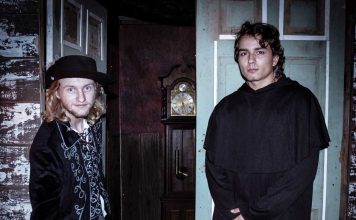Admit it, there have been times you wished the mascot jumping
through the ring of fire would only make it halfway through.
There’s nothing wrong with this. Everyone knows mascots don’t
have the ability to feel pain (or make friends for that matter).
They are a breed of voyeurs wrapped in padded Halloween costumes,
whose sole role in this world is to make little kids laugh,
teenagers want to fight and adults nervous that the Jumbotron is
about to feature them having a cake thrown in their face before
being pantsed and silly-stringed.
But mascots are no longer the most annoying part of attending a
professional sporting event.
Admit it, there have been times you wished the mascot jumping through the ring of fire would only make it halfway through.
There’s nothing wrong with this. Everyone knows mascots don’t have the ability to feel pain (or make friends for that matter). They are a breed of voyeurs wrapped in padded Halloween costumes, whose sole role in this world is to make little kids laugh, teenagers want to fight and adults nervous that the Jumbotron is about to feature them having a cake thrown in their face before being pantsed and silly-stringed.
But mascots are no longer the most annoying part of attending a professional sporting event.
It’s the Cirque du Soleil-ification of pre-game introductions, timeouts and even while teams are playing the games, that has cheapened sports to the point where fans wouldn’t know how to cheer if Thundersticks weren’t glued to their palms, buzzers fixed to the seats and the voice of Oz booming for “defense.”
A recent NBA playoff game in New Orleans featured a ring-of-fire trick between quarters that required the use of fire extinguishers to put down the flame, delaying the second quarter by twenty minutes as the court was wiped down.
Was this the mascot’s fault? No. Would it have been more entertaining and expedient to just light the mascot on fire and save the extinguishing foam for another time? Yes.
The Boston Celtics used pre-game introductions as a competitive advantage against Cleveland in Game 2 of their series when they filled the arena with smoke for the entire first quarter after a fire-laden player introduction. Cavaliers center Ben Wallace was forced to leave the game due to dizziness. (Word is the Giants are looking to incorporate something similar for the next time Barry Zito takes the mound.)
Appealing to the casual fan is getting perilously close to ruining the appeal of professional sports. Frumpy sideline reporters interview celebrities about upcoming movies, as if the casual fan sits through a two-hour sporting event in hopes of hearing how much fun Dane Cook had filming his next straight-to-DVD project. Mini-blimps circle arenas pitching tire specials, potato guns assault crowds with burritos and T-shirts, music blares at eardrum-shattering levels and dance teams … well, dance teams are OK in Casual Friday’s book.
Whatever happened to good, old-fashioned athletic competition with the occasional marriage-proposal-gone-wrong at halftime? Seeing the female run off the court as the bachelor slumps away, wondering why she wasn’t thrilled to get engaged in front of 20,000 strangers and a pantomiming adult-size chicken – now that’s entertainment.
Some athletes have tried to take matters into their own hands to save sports. Aside from using his bulbous rear end to become the Round Mound of Rebound, Charles Barkley made a living terrorizing mascots, including his legendary Karate-Kid-style sweeping of the leg of the Denver Nuggets mascot, who was on stilts at the time.
In the end, though, it’s up to the fans to take back sports from the corporate death grip that says noise and fire equal entertainment. Otherwise, it’s just a circus. And everyone knows the only people more annoying than mascots are clowns.













